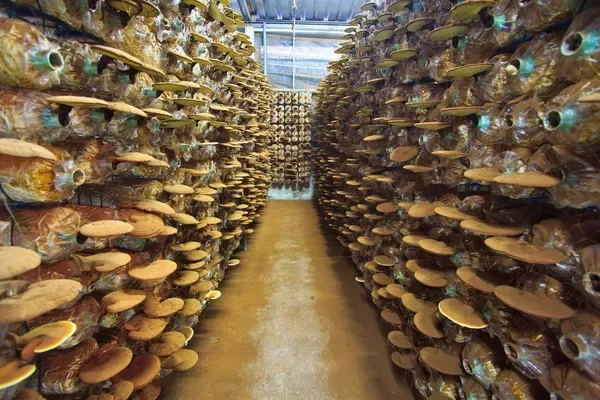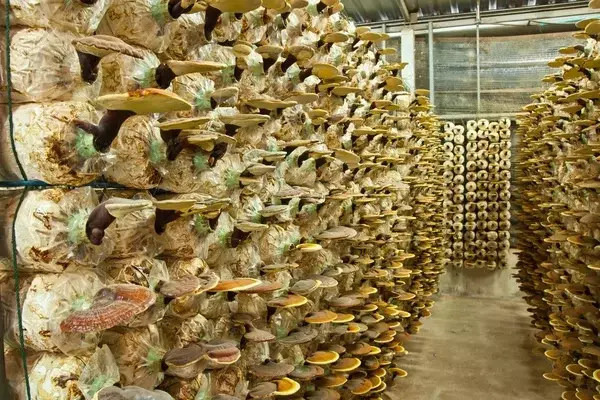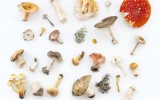Minimum Space Required for Mushroom Farming (Tiny)
It is possible to start a tiny mushroom farm in a very small area with minimal space requirements. With a little creativity, you can find a way to make the most of the limited space you have, allowing you to start your mushroom farm. But how small should your space be for mushroom farming?
For a tiny mushroom farm, a general requirement for space would be about 25–50 square feet, depending on the size and number of growing containers you plan to use. This would allow for a small operation that could produce a few pounds of mushrooms per week. The more space you have, the more mushrooms you can grow.
In this article, you'll learn more about the spaces or areas where you can grow mushrooms and enjoy your fresh harvest. You'll also learn some tips on how to manage a tiny mushroom farm at home.
Summary
- You can grow mushrooms in a small area such as a closet, a spare room, or even a corner of your garage.
- To start a tiny mushroom farm, you will need mushroom spawn, substrate, containers, and sterilization equipment.
- The minimum space required for a tiny mushroom farm depends on how many mushrooms you want to grow and how you arrange your growing containers.

On this page:
Mushroom Farming Requires a Minimum Space of 25–50 Square Feet
Depending on the size and quantity of growing containers you intend to employ, a small mushroom farm would typically need an area of between 25 and 50 square feet. This would enable a little business to produce a few pounds of mushrooms each week.
The space requirement would also depend on the type of mushrooms you plan to grow and the equipment needed to create a suitable growing environment. For example, if you plan to use bags or trays to grow your mushrooms, you may need more space than if you plan to use bottles or jars.
Additionally, you will need to factor in space for equipment such as a pressure cooker or autoclave for sterilizing your growing media, a humidifier or misting system to maintain humidity levels, and a thermometer and hygrometer to monitor temperature and humidity.

5 Areas Where You Can Start A Tiny Mushroom Farm
There are several spaces or areas where you can grow mushrooms in a 25 to 50-square-foot minimum space. Here are some examples:
1. You can start having a tiny mushroom farm in a small room or closet
You can convert a small room or closet into a mushroom growing area by installing shelves or racks to hold your growing containers.
2. A garage or basement is ideal for a tiny mushroom farm
If you have a garage or basement, you can use a corner or a small section of the space to set up your mushroom farm.
3. A greenhouse or enclosed porch is a perfect space for a tiny mushroom farm
If you have a greenhouse or enclosed porch, you can use the space to grow mushrooms by setting up shelves or racks and creating a suitable growing environment.
4. An outdoor shed or container can be a place for growing mushrooms
If you have limited indoor space, you can consider setting up your mushroom farm in an outdoor shed or container that is well-insulated and protected from the elements.
5. Vertical farming systems can be used to grow mushrooms
Vertical farming systems such as stackable shelves or vertical grow bags can also be used to maximize space and increase the yield of your mushroom farm.
It's important to note that the space requirements for growing mushrooms will vary depending on the type of mushroom you are growing and the equipment and supplies needed to create an appropriate growing environment.
It's always best to research the specific type of mushrooms you plan to grow and consult with experts before setting up your mushroom farm.

7 Tips on How to Manage a Tiny Mushroom Farm
Remember that managing a mushroom farm requires patience, attention to detail, and a commitment to continuous learning and improvement. By following these tips, you can increase your chances of success and produce high-quality mushrooms for your customers or personal consumption.
Here are some tips on how to manage a tiny mushroom farm:
1. Maintain proper hygiene
Proper hygiene is essential for preventing contamination and ensuring healthy mushroom growth. Regularly clean and sanitize your equipment and growing containers to prevent the growth of harmful bacteria or fungi.
2. Monitor temperature and humidity
Mushrooms thrive in a humid environment with a stable temperature. Monitor temperature and humidity levels in your growing area regularly and adjust as needed to ensure optimal growing conditions.
3. Provide adequate lighting
Mushrooms require very little light to grow, but a small amount of light is still necessary. Ensure that your growing area has sufficient lighting to promote healthy growth.
4. Follow a consistent watering schedule
Mushrooms require consistent moisture levels for optimal growth. Create a watering schedule that provides the right amount of moisture without overwatering or creating waterlogged conditions.
5. Harvest mushrooms at the right time
Mushrooms should be harvested when they are fully mature and just before they release their spores. This helps to ensure that the mushrooms have a long shelf life and maintain their flavor and texture.
6. Keep detailed records
Keep detailed records of your mushroom farming activities, including planting dates, watering schedules, and harvest times. This information can help you identify trends and make adjustments to your growing methods to optimize your yields.
7. Stay up-to-date on industry developments
Stay informed about the latest developments in mushroom farming, including new varieties and growing techniques. This can help you to stay competitive and improve your operations over time.

How To Start A Tiny Mushroom Farm
Starting a mushroom farm can be a challenging but rewarding experience. By following these basic steps and staying committed to learning and improvement, you can create a successful and sustainable mushroom farm. Here are the basic steps for starting a tiny mushroom farm:
1. Research mushroom-growing methods
Start by researching different types of mushrooms and the growing methods that are best suited to your growing space and budget. Consider factors such as temperature and humidity requirements, lighting needs, and equipment costs.
2. Choose your mushroom species
Once you've identified the growing methods you want to use, select the type of mushrooms you want to grow based on your growing conditions and market demand.
3. Acquire mushroom spores or spawn
You'll need to obtain mushroom spores or spawn to start growing your mushrooms. You can purchase spores or spawn online or from a local supplier.
4. Prepare your growing medium
Depending on the mushroom species you are growing, you may need to prepare a growing medium. This can include materials such as sawdust, straw, or compost. The growing medium should be pasteurized or sterilized to prevent contamination.
5. Inoculate your growing medium
Once your growing medium is prepared, you can inoculate it with your mushroom spores or spawn. This involves mixing the spores, or spawn, into the growing medium and allowing them to grow and spread.
6. Create a suitable growing environment
Mushrooms require a specific temperature and humidity range for optimal growth. You may need to invest in equipment such as humidifiers or heaters to create the right growing conditions.
7. Monitor and maintain your mushroom farm
Once your mushrooms start to grow, monitor and maintain your growing environment regularly to ensure that the conditions remain optimal. This includes monitoring temperature and humidity levels, watering your mushrooms regularly, and ensuring proper ventilation.


